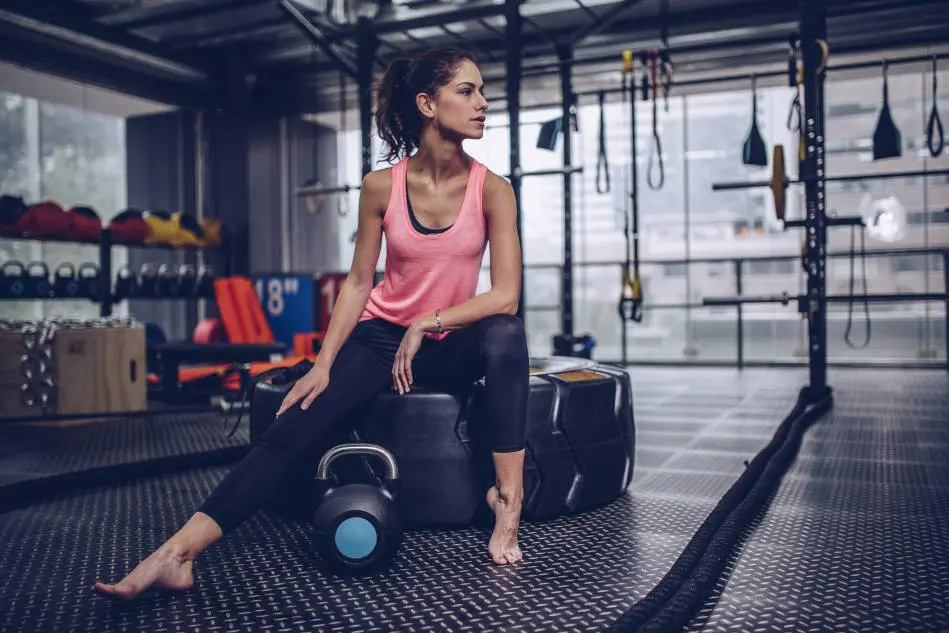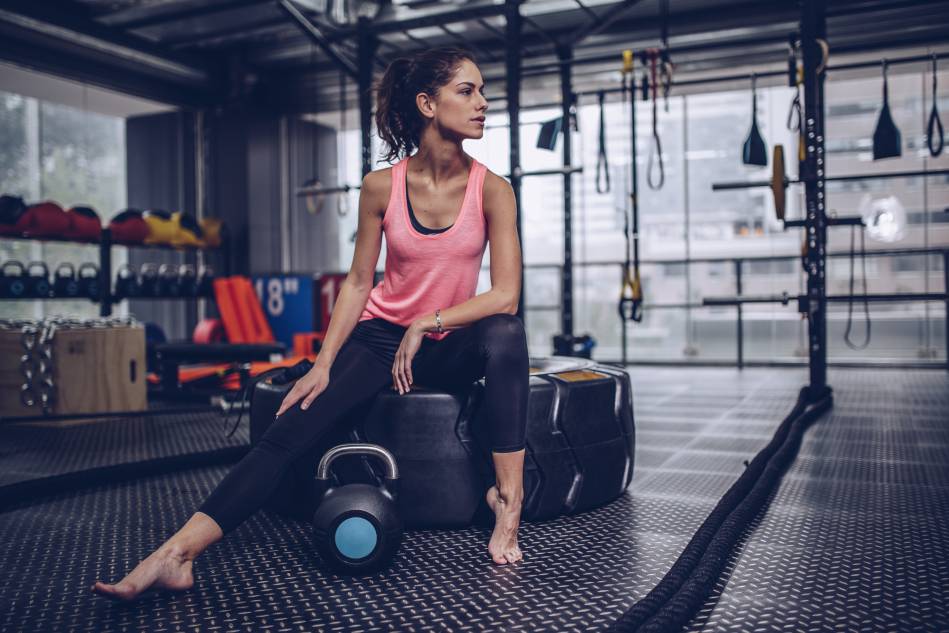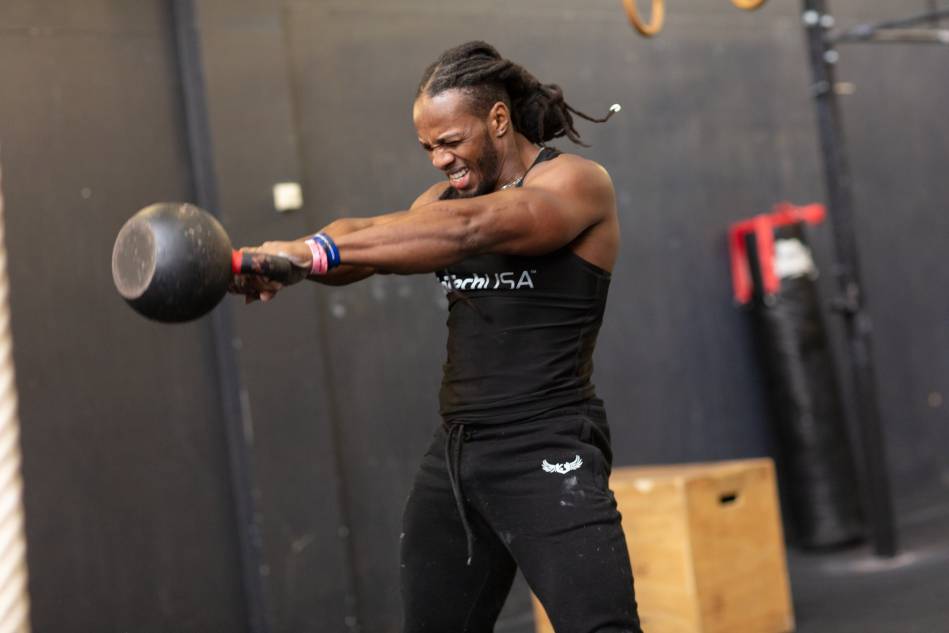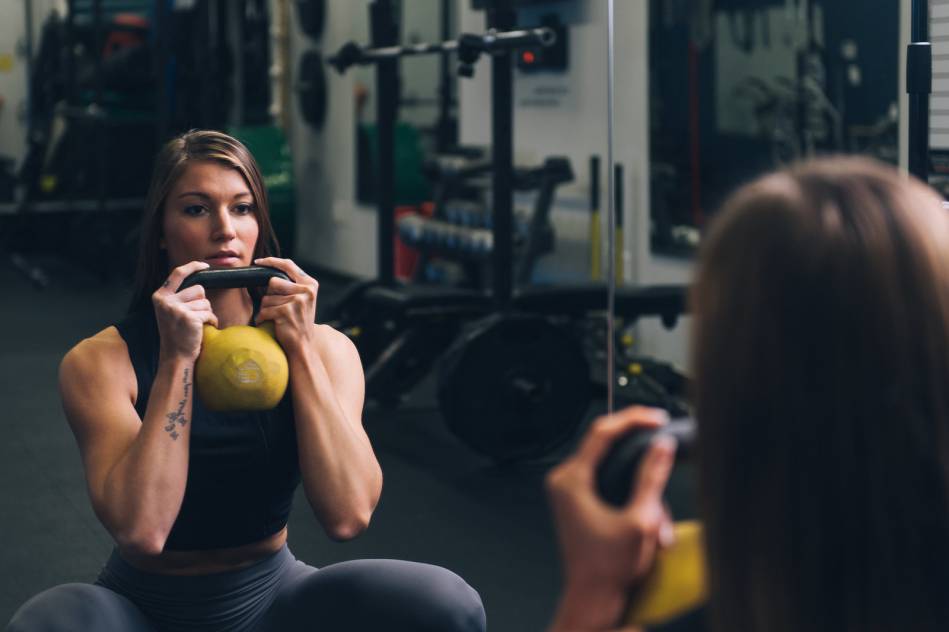
Kettlebell Workout Plan – Not Just for the Advanced!

In the last few years, additional tools that can spice up our traditional gym training have become more and more popular. These tools are in constant renovation – but not only them! – It is important for those who have been devoting themselves to sports for decades too keep evolving as an integral part of their lifestyle, as sometimes making small changes, such as a new kind of resistance, can be a great boost to our daily routine.
|
With the Iron Ball Handle (kettlebell), you can integrate it into almost any workout, easily building muscle or leaning it down, learning it quickly, and putting it together with your gym or home workout. |
With all these super features, we would highlight two critical points to keep in mind before planning your kettlebell workout: choose the right weight and learn how to do the exercises perfectly!
Benefits and effects of kettlebells
The first time you meet a kettlebell in the gym, it may seem strange, frivolous; “What’s special about this iron ball over traditional dumbbells?” You might think. However, the doubt only lasts until you lift the first ball dumbbell following the coach’s instructions.
- One of the great advantages of kettlebells is that because of the need for balance to keep it properly, many muscles in the body are strained at the same time (abdominal, waist, back, deep spine).
- Exercising the muscles mentioned above with good results in a specific workout plan can help improve posture and relieve spine and waist problems.
- Because of its handle, the lever you are working with is much larger.
- Provides a comfortable grip.
- Get continuous improvement with gradual increase in weights and repetitions.
- Men and women can follow the same training plan, it is enough to customize the weight of the sphere.
- Improves blood circulation, quickly starts fat burning during kettlebell training.

How to Build a Kettlebell Training?
As with any workout, of course, the use of the round dumbbell must be preceded by a thorough warm-up of the whole body, and the exercise session is closed by stretching. The help of a professional trainer is highly recommended for the set up of the kettlebell training itself, at least for the first few times, but there are also plenty of training classes available over the weeks.
Even if you are completely comfortable and experienced in the world of normal dumbbells, professional help in setting up your kettlebell workout won’t hurt:
- The use of the bell requires much more mobility than traditional weights, much wider range of motion,
- In the absence of proper mobility or because the load falls elsewhere, you may only be able to move much lower weights – initially.
- Co-ordination skills may also need to be improved, for the first reason (the handle is different than the center of gravity).
Just like with a traditional workout, you can do a full body or split workout with bell, except that kettlebell exercises always have more muscles working at the same time, so this is not the best way to catch up with only one muscle group.
Following a warm-up with a series of moving exercises using a small iron ball weight of 8-12 kg (e.g: some rowing, squats, jerks, press), you can also do some reps of the Turkish get-up if you already know how to do do this exercise, as it prepares almost all the muscles in the body to work out. This should be followed by strength training with more weight, less repetitions, and then endurance workouts in the second half of the training.
There are exercises that can be done with a traditional dumbbell (e.g: shoulder press), but there are also exercises that are specifically part of a ‘kettlebell workout’ (e.g: Swing, American swing, clean), which you can learn gradually, one step at a time.
Basic kettlebell workout plan for beginners and advanced
Now we introduce our favorite kettlebell exercises so you can learn how to do them properly.
1. Swing (kettlebell swing)
What you’ll need: 1 medium size kettlebell (beginners 8-12 kg, advanced more than 12 kg).
Setting up: Stand winder than hip width, with the ball in front of you on the ground forming a triangle with your two feet.
Exercise: Grab the bell with extended arms, straight back, slightly bending your knees and then pull the bell from hip to front, up to about eye level. It is important that the back and arms remain stretched all the time, not lifting the weight from the shoulders, but pushing from the hips. It’s a good idea to first practice this hip movement, the important question is how high your weight goes. It is important that when the ball rises, you do not lean back or forward. Loose shoulders, loose wrists. Strengthens back, abdominal, hip, butt and thigh muscles.
Repetitions: From 10 and above, as long as you can execute them properly.
2. Dead Lift (sumo lift)
What you’ll need: 1 or 2 medium or heavier weights (12 kg total for one weight, 14-16 kg total for two).
Setting up: The size of the strut depends on whether you use one or two dumbbells. If you are working with one sphere, you may have the wingspan of your hips between your hips, and if you work with two, you may stand slightly wider. The weight can be between your feet or, in the case of two bells, the outer arch of your feet on the ground.
Exercise: The feet look forward, your back straight, your head straight forward (not down!) as you crouch and lift your weight with a dynamic explosive motion to the point where your legs are straightened. It gives you broad back muscles, buttocks, thigh flexion, and you can train your core muscles also.
Repetitions: 10-20 reps / set.

3. Goblet squat
What you’ll need: 1 medium or heavy kettlebell (12-16 kg for beginners, more than 16 kg for advanced)
Setting up: Pick up the position you use for simple weightless squats, you can easily adjust the width: your two elbows must fit between your thighs when you squat to grab the bell and hold it on chest level.
Exercise: Take the bell from the ground with your back straight, hold kettle’s handle on both sides and squat until your elbows reach the inside of your knees. Then go back up raising your hip up and forward. Stand on the whole surface of your foot, do not tip your toes, your knees should not go forward.
Repetitions: 10-20 reps / set.
4. Halo
What you’ll need: 1 light to medium weight (6-8 kg for beginners, 12-14 kg for advanced)
Setting up: Stand stable, feet broader than shoulder width, bell in front of you on the ground.
Exercise: You lift the kettlebell with your back straight and then with your arms take it making circles around your head. Try to lower it deeper between your shoulder blades and keep the bell at the level of your eyes. Look forward, holding your core, moving nothing but your arm and bell. Great shoulder mobilization exercise.
Repetitions: 6-8 reps / set.
5. Kettlebell windmill
There are several variants, and here we present the lower windmill.
What you’ll need: 1 small or medium weight (6-8 kg for beginners, 12-14 kg for advanced).
Setting up: Broad, stretched legs at shoulder width, the foot next to the kettlebell facing forward while the other foot is turned out making an L shape, keeping the heels on the same line.
Exercise: Pick up the bell and place it overhead, keeping your wrist neutral and in line with your arm. The other hand is going with palm open on the inside of the leg with the foot that is turned out. Slide with your arm on the leg as long as you can towards our foot, keeping the legs straight and your other arm stretched out to the sky. Then return to the initial position. It works on the shoulders of the torso muscles.
Repetitions: 10-10 reps on each side per set.
6. Press
What you’ll need: 1 or 2 small or medium size kettlebells (beginners 6-8 kg, advanced 10-14 kg).
Setting up: Hip-width stading, feet facing forward. You keep the bell in line with your shoulders, arms folded vertically in front of your chest.
Exercise: You push the kettlebell upwards in front of your face until your arms are straight, your shoulders should not protrude nor should you press with your joints (do not pull it towards your chin, let the arm have a natural movement). Tight belly, straight back. It is a classic shoulder exercise, but it also uses the lower back for proper posture.
Repetitions: 10-10 reps on each side per set.
7. Clean
What you’ll need: 1 small to medium bell (6-8 kg for beginners, 10-12 kg for advanced).
Setting up: Stand greater than shoulder width, kettlebell centered on the ground.
Exercise: Straight back, looking forward (not downwards), then pull the bell to your shoulder with a known hip swing, with your arms bent to touch your chest. Keep your elbows close to your torso all the time, with a tight grip, otherwise the weight on your wrists will be very high. Here, too, the work of the hips is emphatic and the momentum we gain is not from flexing the biceps. In the upper position, tighten your back, buttocks, abdomen.
Repetitions: You can do it alternately, 6-10 reps for each arm per set.
8. Saw
What you’ll need: 1 small or medium kettlebell (beginners 6-8 kg, advanced 8-12 kg).
Setting up: Offensive position, one leg stands in front with the weight on the inside of your foot, the other stands at the back. The two legs are not in line, but in a small stretch. The bell is placed on the inside of your foot in the front.
Exercise: Lean your felbow on your front leg, not on your knees but on your thighs instead, to ensure stability and keep your back straight. With your other hand, reach for the ball and, as if cutting, pull your arm with your elbow tight against your trunk, making a rowing movement. Triceps, back and forearm muscles work as well.
Repetitions: 8-10 reps / set
As you can see, the kettlebell is not just a heavy ball, a strangely shaped weight, but a tool to train your whole body, anywhere, anytime. It takes up little space and can be used even by people with spinal or back problems – with professional supervision. For each of the exercises described above, it is very important to keep your posture and your core muscles tight.
Exercise initially requires self-control by checking yourself in the mirror, but after strengthening the muscle sensations associated with the movements, it is no longer important. Choosing the right weights is also a cardinal issue, as you can see, even for the simplest of tasks, this is a complex series of moves, for which we initially recommend strting to practice with a maximum of 4-8 kg iron ball.
Panna Plézer
Sports Coach